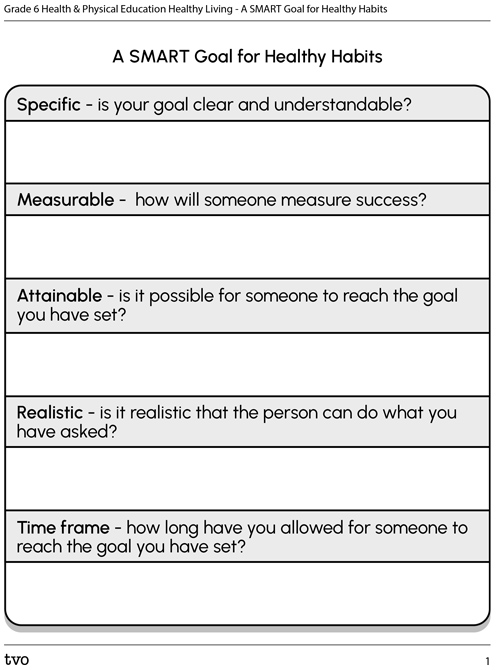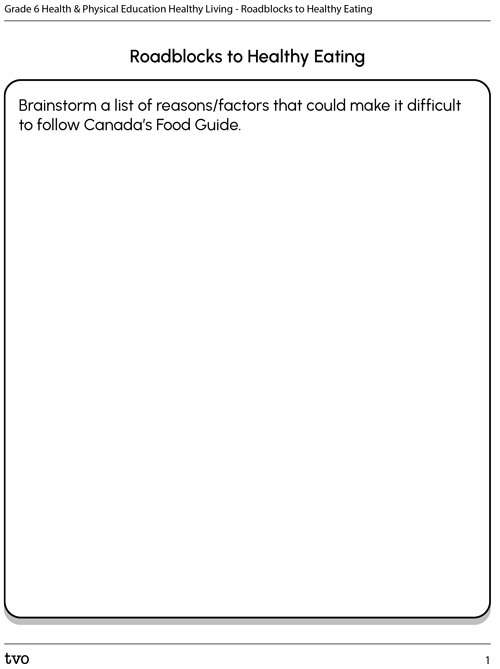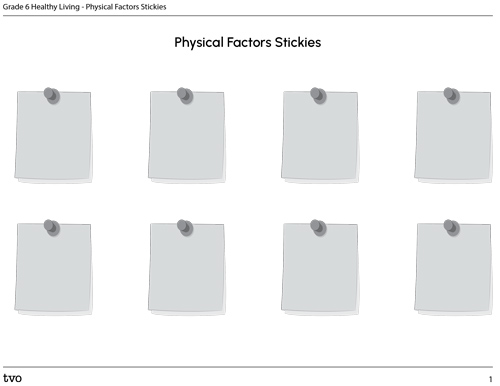Minds On
Too busy to be healthy?
Human bodies need food to fuel them and get them ready, both physically and mentally, for a busy day!
What would be an ideal breakfast for a Grade 6 student? Consider how a busy morning could affect what and how they eat.
Explore the following images to get an understanding of some breakfast options.
Pause and Reflect
Pause and reflect
How can a busy life impact eating habits and food choices? How can people make healthy choices when they are busy?
Record your thinking digitally, orally, or in print.
Action
Making healthy choices
One of the best ways to make healthy eating choices is to align eating habits with Canada’s Food Guide. It creates a balance among proteins, fruits and vegetables, whole grains, and water intake!
Investigate
Food search
Explore the following image of Canada’s Food Guide.
Do you notice any foods that are missing from the Food Guide? Why might they not be included?
Record your thinking using a method of your choice.

A plate of food is divided into three sections. Half of the plate is fruits and vegetables. An arrow pointing to the fruit and vegetables reads “Have plenty of vegetables and fruits.” A quarter of the plate is meats and proteins. An arrow pointing to the protein section reads “Eat protein foods.” Finally, another quarter of the plate is made of grains. An arrow pointing to the grains section reads “Choose whole grain foods.” Beside the plate is a glass of water. An arrow pointing to the water reads “Make water your drink of choice.”
Factors that prevent healthy eating
Even though we may want to build healthy eating habits, sometimes we can’t because of reasons called “factors” that prevent us from eating well.
Press the 'Definition' button to learn about factors.
Factors are circumstances, facts, or influences that contribute to a result or outcome.
For example, you may not want to play outside because it is raining. In this situation, rain is a factor preventing you from exercising outside.
Brainstorm a list of reasons/factors that could make it difficult to align eating habits with Canada’s Food Guide.
You can use the following fillable and printable Roadblocks to Healthy Eating document to record your reasons/factors. You may also record your factors using another method of your choice.
When you’re ready, explore the following list of factors. Did you have any of these factors on your list? Do any of these examples surprise you? Why or why not?
Factor match
Let’s play a matching game to show our understanding of factors.
The following is a list of four scenarios. In each scenario, a type of factor is preventing someone from eating a food. Your task is to match each scenario with the factor that it describes.
Cues and physical factors
Developing personal guidelines for healthy eating isn’t just about what we eat: it’s also about knowing when to eat.
Our bodies give us cues that help us know when to eat and drink. A cue is a message from the brain that gives instruction to the body. If the cues are ignored, our bodies tell us something is wrong by creating headaches, dizziness, anxiety, irritability, and other physical warnings.
Brainstorm a list of reasons, or physical factors, why our bodies may need more or less food and water. Physical factors are things that are controlled by our body.
You can record your list of physical factors in the following fillable and printable Physical Factors Stickies document. You can also record your ideas using another method of your choice. Be creative!
When you’re ready, explore the following list of physical factors.
These physical factors are ways that our brains tell our bodies how much and when to eat and drink.
Compare your sticky notes against the list of physical factors to check your answers.
Pause and Reflect
Pause and reflect
How might a Grade 6 student feel if they wait until they are very hungry to eat? How might their body feel when they have eaten too much? What is one of the signs that a person hasn’t had enough to drink?
Record your thoughts using a method of your choice.
Consolidation
Being SMART about healthy habits

A SMART goal is a goal that is created to help someone work towards getting better at something. Today we are going to create our own SMART goals. Our SMART goals will be ways to develop healthier eating habits.
What are SMART goals?
SMART stands for:
- Specific
- Measurable
- Attainable
- Realistic
- Time frame
What do these words mean? Explore the following list to learn about what goes into a SMART goal.
Make a SMART goal

Our SMART goals could be something like:
- eat fruit or vegetables as a snack every day
- keep a full water bottle handy all day
Create a SMART goal for a Grade 6 student. Consider ways that could help students develop healthier ways to approach eating and drinking.
Make sure your goal is "SMART" by filling out the following fillable and printable A SMART Goal for Healthy Habits document. You will need to explain how your goal is specific, measurable, attainable, realistic, and what the time frame for your goal is.
You can also use another method of your choice to record your thinking.

Press the Activity button to access A SMART Goal for Healthy Habits.
Activity (Open PDF in a new tab)Reflection
As you read through these descriptions, which sentence best describes how you are feeling about your understanding of this learning activity? Press the button that is beside this sentence.
I feel…
Now, record your ideas using a voice recorder, speech-to-text, or writing tool.
Press 'Discover More' to extend your skills.
Discover MoreMore SMART goals
Can you identify other areas of a Grade 6 student’s life where they may need a strategy like SMART goals to help them to make healthy decisions?
How might a student apply SMART goals to the following areas of their life?
- school work
- sports teams
- music or art clubs
- organizing their homework
- time management






